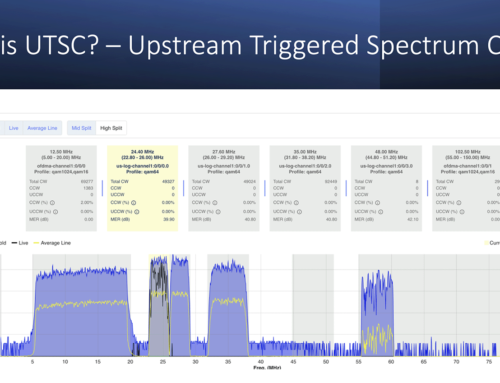A Briefer History of CableTV
For those in the know…
A briefer history of CableTV provides an abridged version of how we got to where we are now and CableTVs impact on modern-day test equipment. Looking at the history of CableTV, its beginnings were very humble with many taking credit for its first invention. Let us not delve into those disputes, but look towards where CableTV really started to emerge in the mainstream.
It was not until 1947, post WWII when TV began to start getting momentum with 44,000 sets in the U.S. and three broadcasting networks, NBC, CBS and ABC. These were still black and white TV sets, but offered voice and higher quality moving pictures at 480 lines resolution. By 1968 15.1 million households had television. To give some perspective the US population was 200,706,052. 1971 marked the year that color television set sales outpaced those of black and white televisions. One-way video delivery from 1947 through the late 1990’s was consistently improving in quality and the number of stations being offered to subscribers. For over 50 years cable subscribers have come to expect continuing improving service, new and improving content, and ever improving reliability.
DOCSIS Arrives
A big change happened in the late 1990s. Two-way communications started to occur over the cable TV networks, which evolved into Hybrid-Fiber Coaxial (HFC) networks.
This changed everything! What worked for your parents is not going to cut it for the next generation. Our generation enabled the Internet. Our kids and their kids will not know a world without it. They just expect everything to be connected and to have what they want at their finger tips. If they want to play a game – it’s online. If they want to call someone – it’s online. If they want to tell the world they just asked Jessica to the prom – it’s online too. Future cable subscribers will be very hard to please. They want great service and cutting-edge technologies on demand and if they don’t get it from you they will move on and find someone else to provide what they want.
Test Equipment Changes
For the first 50 years of cable TV Test equipment did improve at the same rate as TV service, but it was primarily focused on forward path distribution. The main functions included video level measurements and sweep & balancing the network. One of the first vendors to produce a hand-held instrument to test two-way DOCSIS services was a start-up called HUKK Engineering.

Hukk CR1200R
Much of our hand-held test equipment today is still based on the core designs envisioned by HUKK Engineering. A cable modem with a signal level meter. The question is what comes next? Is it just around the corner? I think it is. We will be seeing some pretty cool technologies coming up quite soon and I’ll be covering them.
Stay tuned…
Previous events can be seen under the blog.
- If you are watching this on youtube please hit the subscribe button!
- Let us know what you think and remember to share!
- You can find slides at the bottom of the page and some on slideshare.
- Find out about events or articles by following us on Twitter, LinkedIn or Facebook too.
- We have stuff. Interested in buying some clothes with cable stuff. Click here
Also available on iTunes, Google Podcasts, Spotify, vurbl see podcasts “get your tech on”.





Leave a Reply